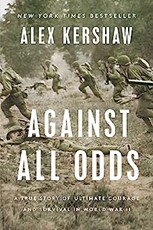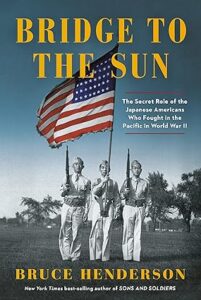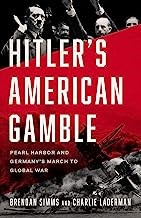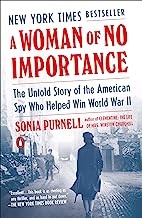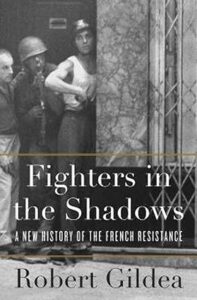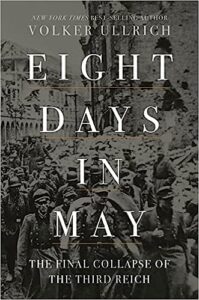NAZI MINISTER TO QUASH HITLER’S “NERO DECREE”
Berlin, Germany · March 29, 1945
By 1945 everything was falling apart for the Nazi regime. Most of the conquered areas in the Soviet Union and Western Europe had been recaptured from the Nazis. The Wehrmacht’s last gambit in the west, the Ardennes Offensive, better known as the Battle of the Bulge (mid-December 1944 to mid-January 1945), had failed with the loss of hundreds of precious aircraft and tanks and upwards of 100,000 killed, missing/captured, or wounded. As the Soviet Army approached the Nazi capital and epicenter of the tottering regime from the east and American units from the west neared the Elbe River, 60 miles south of Berlin, Adolf Hitler issued his “Nero Decree” (“Nerobefehl,” or scorched earth decree) on March 19, 1945. The decree was officially titled “Demolitions on Reich Territory” (“Befehl betreffend Zerstörungsmassnahmen im Reichsgebiet”). The first time Albert Speer, Nazi Minister for Armaments and War Production, had heard the words “scorched earth” in reference to Hitler was nearly eleven months before. Hitler had been impressed with Soviet dictator Joseph Stalin’s use of “scorched earth” in successfully halting the German drive on Moscow in 1941. Hitler’s secret instructions of March 19 ordered the destruction of all military transport and communication facilities, industrial establishments, and supply depots that had not yet been destroyed by the Allies, as well as the destruction of anything else of value within Reich territory that could in any way be used by the enemy. The Fuehrer of the Thousand Year Reich was resolved that, if he was taken down, Germany would be destroyed too. Ten days later, on this date in 1945, Speer convinced Hitler to appoint him (Speer) to implement the scorched earth decree. Unknown to Hitler until his final days, Speer worked at cross-purposes to persuade senior generals and Nazi Party administrators to evade the Nero Decree. Forty-two days after its issuance, the Nero Decree was moot: Hitler was dead by his own hand, one among 200,000 Berliners who were casualties of his war of perdition. Speer himself was arrested on May 23, 1945, convicted by the International Military Tribunal in Nuremberg for his role in the Nazi regime, principally for the use of forced labor, and sentenced to 20 years’ imprisonment.
[amazon_carousel widget_type=”ASINList” width=”600″ height=”200″ title=”Recommended Reading” market_place=”US” shuffle_products=”False” show_border=”False” asin=”0099551896,4871878791,0142002801,0745639186,0141022310,1848843801,1906033129,0143122134,1874622086,0760312400″ /]
Albert Speer, Hitler Protégé, Reich Architect, and Minister of War Production
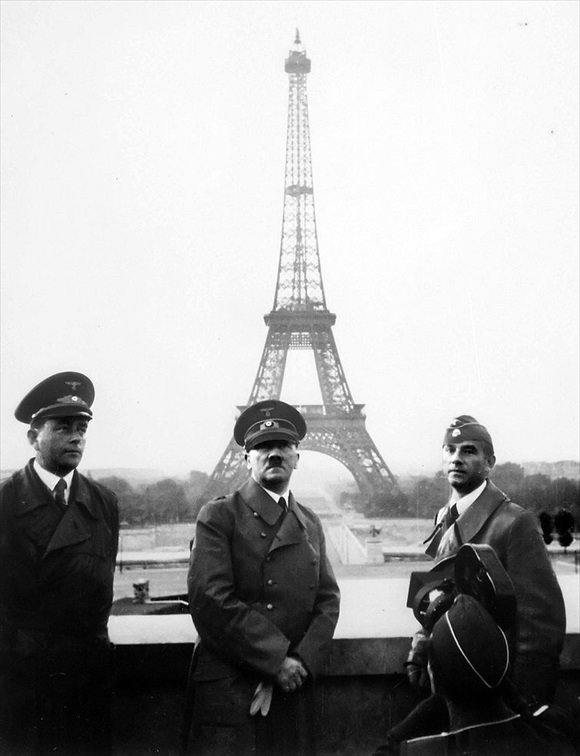 |
Above: Standing before a kneeling news cameraman, “Architect of the Reich” Albert Speer (left), Adolf Hitler, and German sculptor Arno Breker take in the sites of conquered Paris, June 28, 1940.
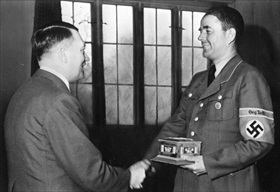 | 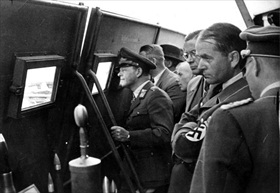 |
Left: In a May 1, 1943, ceremony, Hitler presented Reich Minister for Armaments and War Production Speer the Fritz Todt Ring for German Engineering in gratitude for the “extraordinary increase in weapons, armored vehicles, and munitions production during the previous year.” With no background in economics or production planning, Speer made himself czar of Germany’s wartime economy. Propaganda Minister Joseph Goebbels called Speer “a genius with organization.” Despite the Allies’ strategic bombing campaign of German industrial centers, war production increased until the latter half of 1944, when armaments production exceeded nearly twice the capability of the increasingly pressed Wehrmacht to consume manufactured output. By then Speer considered the war lost.
![]()
Right: Behind protective shielding Speer (arms folded with swastika armband) and Luftwaffe Field Marshal Erhard Milch (hand on support) observe a demonstration of a newly developed weapon (eines neuentwickelten Kampfmittels). The demonstration took place in October 1943 at an “airport in the East” during a symposium of leading German armament experts called together by Speer.
Armaments and War Production Minister Albert Speer: Third Reich Revisionist
![]()

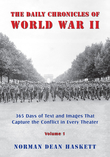 History buffs, there is good news! The Daily Chronicles of World War II is now available as an ebook for $4.99 on Amazon.com. Containing a year’s worth of dated entries from this website, the ebook brings the story of this tumultuous era to life in a compelling, authoritative, and succinct manner. Featuring inventive navigation aids, the ebook enables readers to instantly move forward or backward by month and date to different dated entries. Simple and elegant! Click
History buffs, there is good news! The Daily Chronicles of World War II is now available as an ebook for $4.99 on Amazon.com. Containing a year’s worth of dated entries from this website, the ebook brings the story of this tumultuous era to life in a compelling, authoritative, and succinct manner. Featuring inventive navigation aids, the ebook enables readers to instantly move forward or backward by month and date to different dated entries. Simple and elegant! Click 

